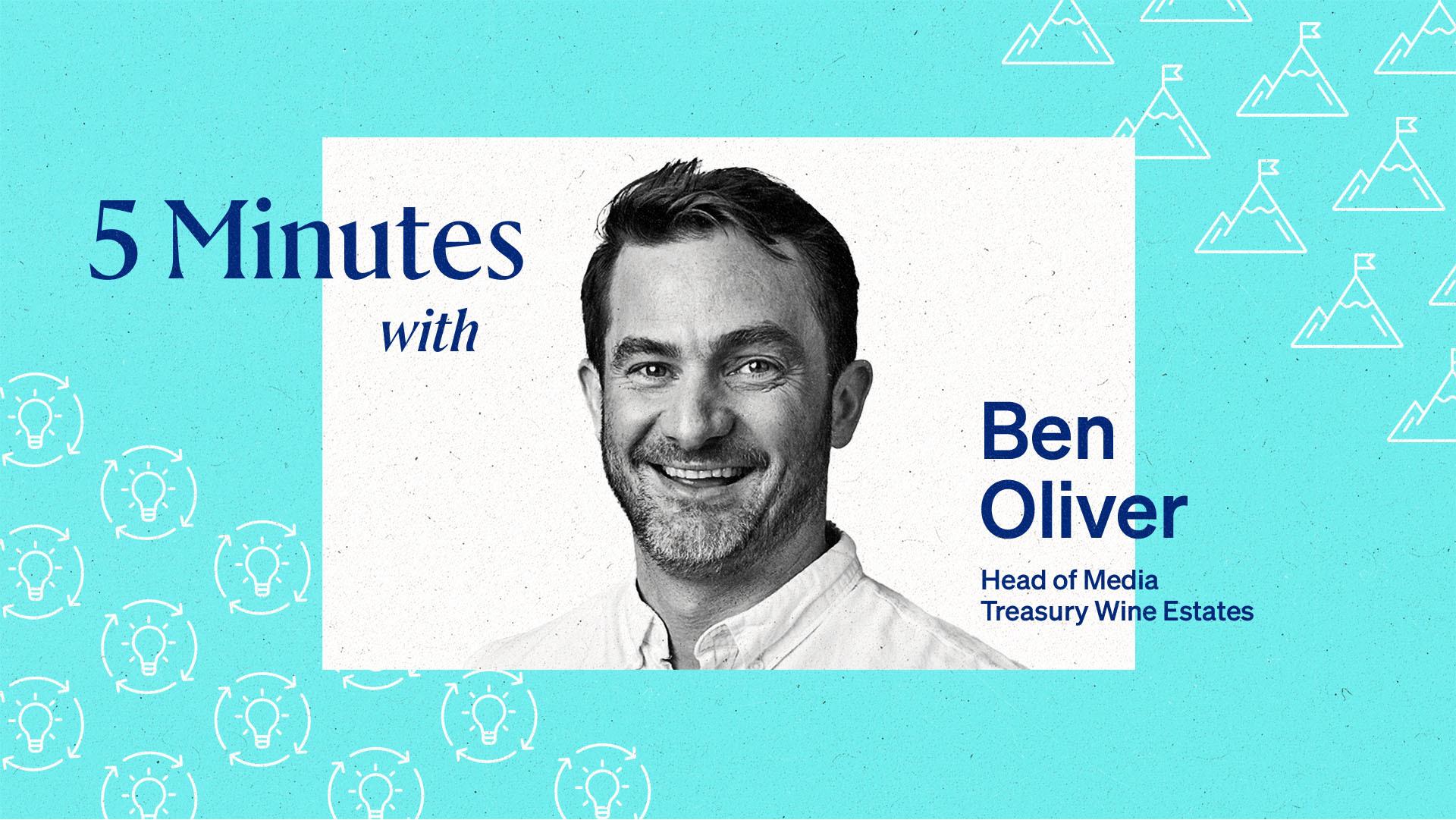5 Minutes with Treasury Wine Estates’ Ben Oliver

As Australia’s biggest wine producer, Treasury Wine Estates boasts a cellar of a veritable who’s who of the wine world, from Australian icon Penfolds to hip 19 Crimes to Napa Valley stalwart Stags’ Leap.
While these labels vary in price points and target markets, they all share strong, recognizable brands that appeal to everyone from wine aficionados to casual weekend wine drinkers.
The Current caught up with Ben Oliver, head of media at Treasury Wine Estates’ in-house agency, Splash, to hear what’s top of mind for one of the world’s biggest wine companies and how Oliver thinks about its media plan.
The following interview has been edited for length and clarity.
What has been the biggest opportunity you’ve captured by investing in premium media?
For us, it’s less about premium media and more about quality attention. After all, what is “premium” is quite subjective, although most would agree [that] you know it when you see it.
The Age is more “premium” than Breitbart. CTV [connected TV] is more premium than YouTube. What is considered premium is measured relatively, not absolutely. Ultimately, and generally, premium media means more attention, more impact and more brand uplift.
I think, however, it’s a fallacy to say more attention is more. How much attention you need as a brand depends entirely on your brand size, category, life cycle and more. Some brands need lots of active, high-quality attention, while for others, passive attention may be sufficient.
It should go without saying, but you get what you pay for, and, funnily enough, higher quality costs more. We need to balance out the effectiveness of high-attention media with a nuanced view of efficiency to strike that balance, and ultimately grow our brands.
On the other hand, what has been the biggest challenge you’ve encountered?
We understand there’s a balance to be had between efficiency and effectiveness with all media buys. They do trade off against one another. But many of the people we chat to see the world primarily through an effectiveness lens — in other words, CPM [cost per mille]. It’s been, and in many ways still is, a journey to get people weaned off cheap CPMs.
Whether my CPM is $2 or $200 doesn’t really matter if I’m making no impact. We are getting better at this, with brand uplift tools and MMM [mixed media modeling] now talking to effectiveness, but we need to retrain ourselves (and general marketers) about the difference between the two, and how we are driving and balancing both outcomes.
How are younger generations’ wine drinking habits changing, and how do your media plans reflect that?
Younger cohorts are drinking less, and less frequently, which means there’s a volume downside. In other words, we are selling less. Younger cohorts are also not driven by the same wine cues as their parents. They want different things from their alcoholic beverages. Things like history, providence, terroir — all those traditional wine cues we used to rely on — are not as important for lower-priced wines.
The only upside is when they drink, they tend to drink higher quality, which means there is a margin upside for us. But these trends are less important in some ways than ensuring our comms are reaching as many of a category as possible.
We see the wine universe as every Australian over the age of 18 who drinks wine once a month (and even alcohol drinkers who are about to enter the wine category). So that’s about 13.3 million Australians, more than 50% of the adult population of 20.3 million.
Our media choices have to reflect the fragmented nature of media, and ensure we are hitting various touchpoints, and reaching as many of these consumers as possible. Put simply: less data overlays, more reach and more channels.
Treasury Wine Estates owns many iconic wine brands, available all around the world. How do you plan successfully across so many diverse markets?
It’s about finding the right brand for the right category, and the right product for the right consumer and occasion. In some markets, that might mean Pepperjack reds, and for others it’s Matua whites. We’ve got plenty of data to help us make those decisions about where and when we play.
We also are very mindful, beyond brands, of how format and occasion play a role. For example, we recently brought back the “goon bags,” or wine in a bag, under the new moniker “Bagnums.” The insight here is that consumers know that once they open a normal bottle, they need to drink it fairly quickly.
A Bagnum removes that friction as it stays fresh for much longer. But with goon bags being given a bad rap, we had to reframe the product in a way that would highlight the product’s advantages while overcoming perceptions that wine in a bag is poor quality.
Similarly, we launched wine-in-a-can to compete in the ready-to-drink space and have several wine-based cocktail products either in-market or in development. Watch out for Squealini; that’s all I’m going to say!
Subscribe to The Current
Subscribe to The Current newsletter